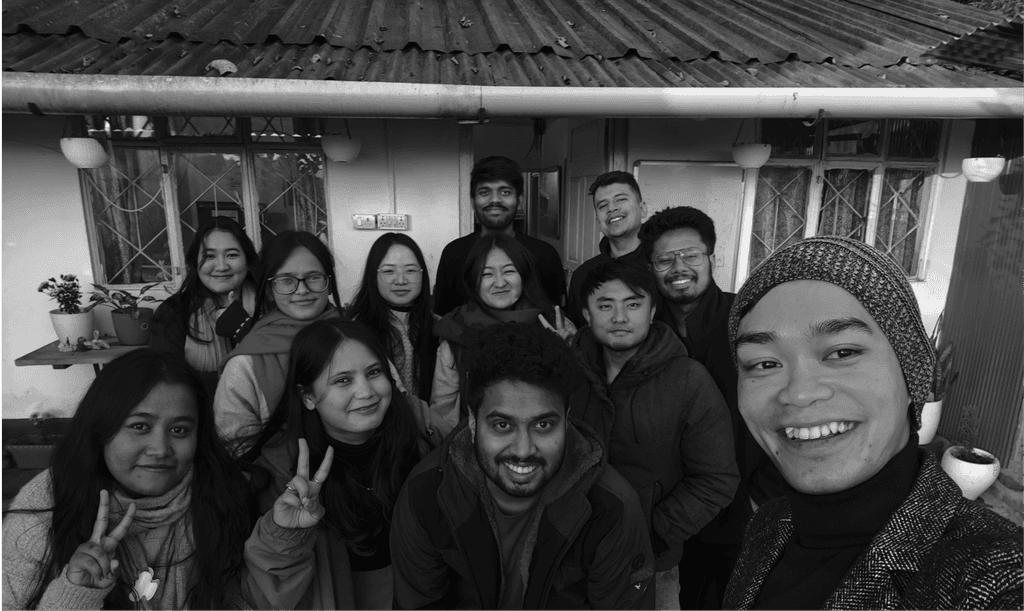Bengali
The Lost Math of Kolam #GenderEquality

Proteeti Satpati
Jul 2, 2025
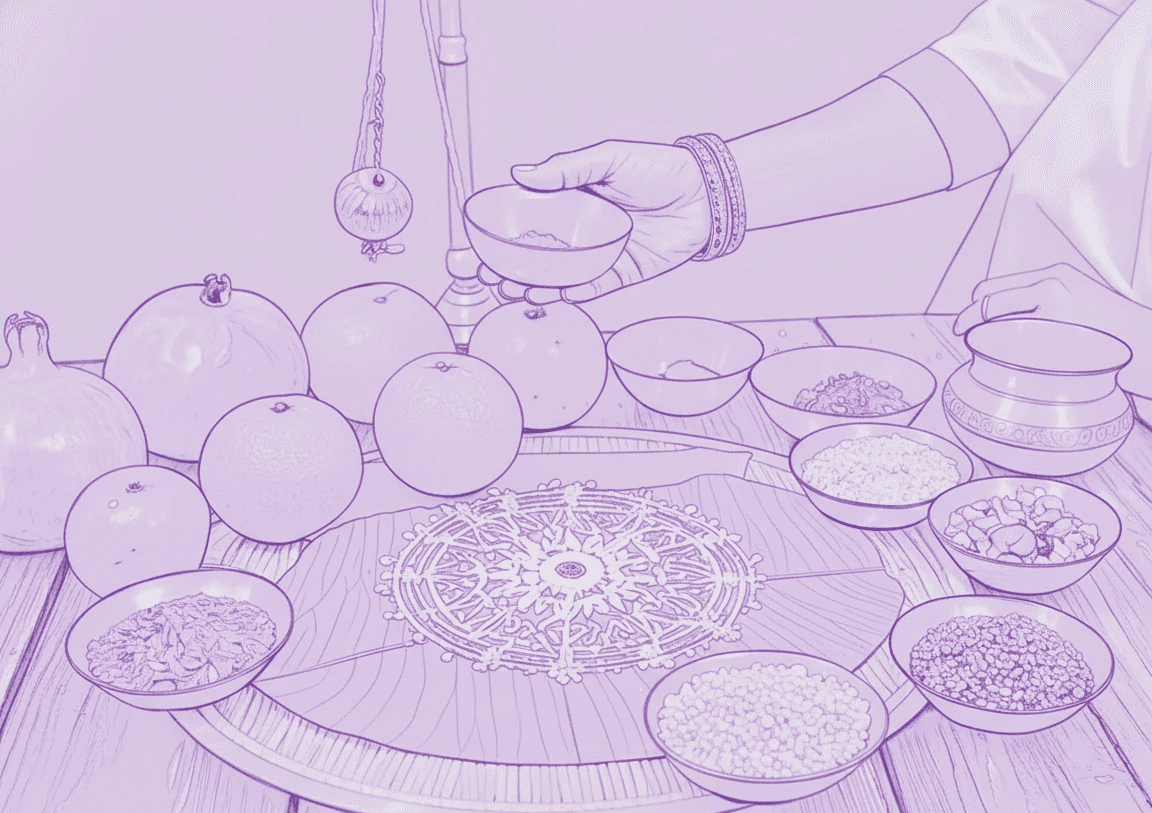
The Lost Math of Kolam
#GenderEquality
Mornings in the southern states of India are much the same as anywhere else, with only a small twist—women rise before dawn, sweep the thresholds of their homes, and then sit down to create some of the most intricate geometric patterns using rice flour.
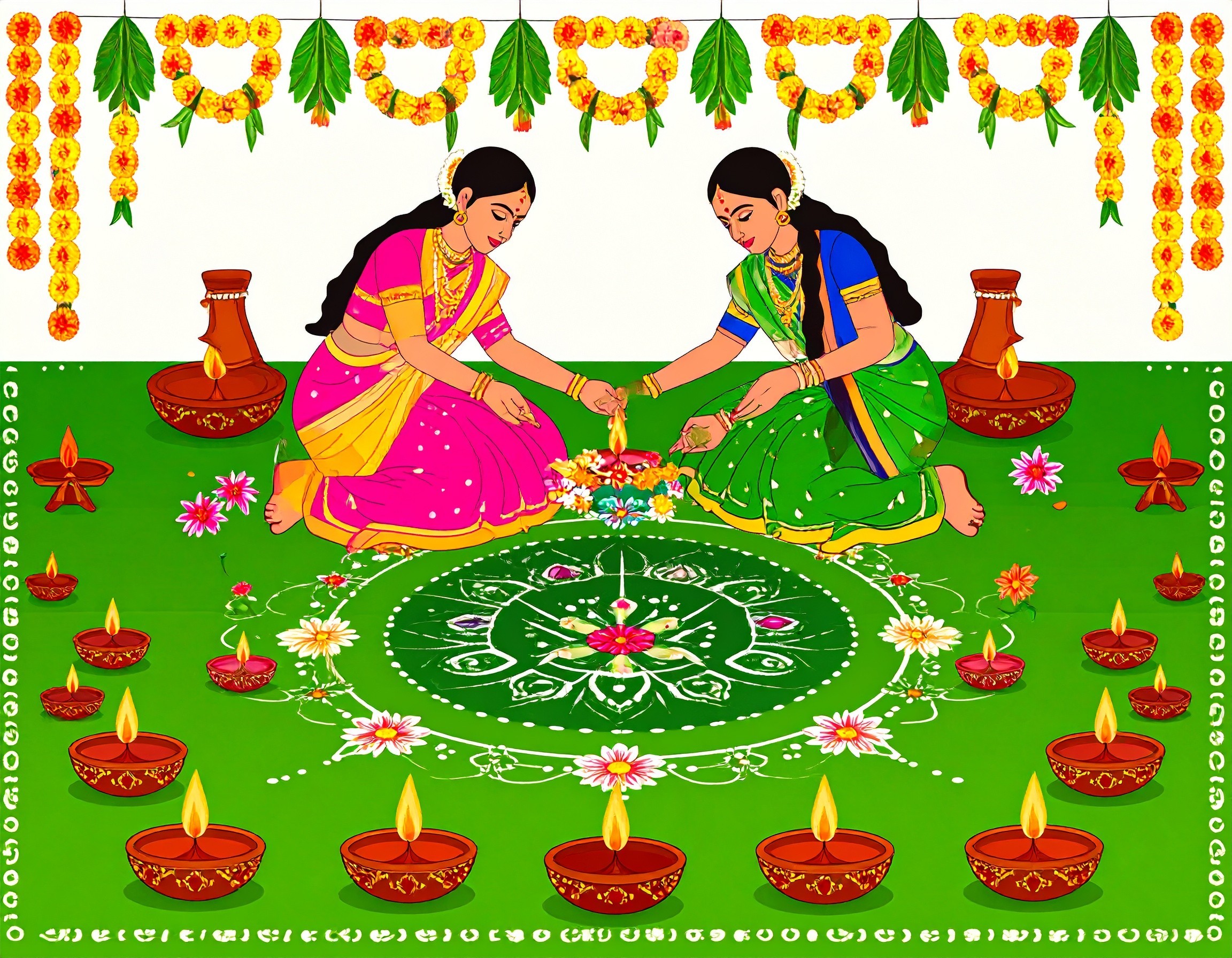
These designs, known as kolam in Tamil Nadu, rangavalli in Karnataka, and muggulu in Andhra Pradesh, are more than decorations—they are visual rituals, mathematical constructions, and carriers of centuries-old algorithms passed down orally from mother to daughter. Kolams, long dismissed as folk art or women’s tradition, are now being recognized by most as ancient knowledge systems that encode geometry, logic, memory, and computations. They are representatives of an unwritten algorithmic tradition rooted in aesthetics and cultural symbolism, and interwoven with the daily lives of the women in southern India.
Decoding Kolams
A kolam is a symmetrical, looping pattern created by dropping tiny dots of rice flour on the ground and then drawing continuous lines around them in closed curves. These designs range from simple grids to highly complex arrangements, all drawn freehand. Kolams are traditionally drawn outside home entrances, symbolizing auspiciousness, welcoming prosperity, and warding off evil. They also double as a form of offering to birds and ants, promoting ideas of non-violence, and sharing. Though ephemeral— gradually erased by wind, rain, or foot traffic—kolams are redrawn every day and over time, their patterns become embedded in the cognitive muscle memory of the women who create them with religious dedication.
A Women-Led Tradition
Kolams at first glance may come across as mere ornamentations; but upon a closer look, we find embedded within their loops and curves, a powerful form of mathematical reasoning.
Kolams are built on the foundations of mathematical tools of symmetry, geometry, and pattern recognition. This is a form of math that is practiced without formulae or formal instructions. Women, most of whom have never studied mathematics in schools, intuitively develop an understanding of building layered complexities from dot matrices, constructing repeating motifs using modular transformation and other such concepts, through these kolam arts.
Kolams embody algorithms, instructing where to start, where to loop, where to mirrora shape, and where to end, almost like the rules of construction in computer science. Kolams’ ingenuity lies in embedding these rules in hand-drawn form, without ever writing them down.
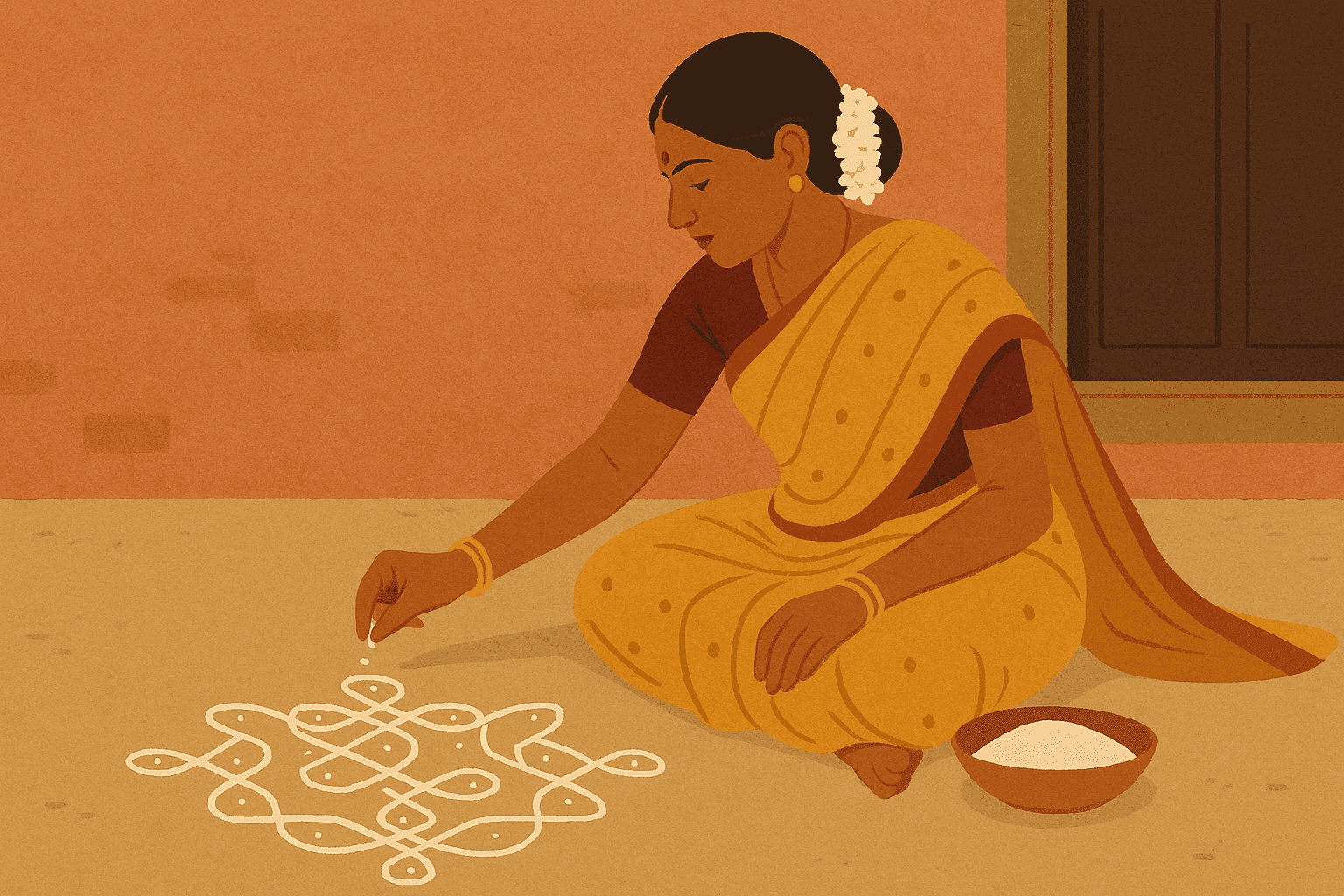
Kolams and Computational Thinking In recent decades there has been a surge in decoding kolams through the lens of computer science. For instance, Dr. Nagalakshmi and her team at Anna University have created a software that generates kolams based on input patterns, thereby reverse-engineering traditional methods into digital codes. Mathematician Dr.Sriraman went so far as to describe kolams as a form of graph theory and lattice math practiced long before these concepts were even formally defined.
Each kolam is an example of visually coded logic and can have potential applications in fields of robotics, computer graphics, and generative design. A particularly intriguing subset of kolams is the pulli kolam, drawn using the dot grid and continuous lines. Researchers have modelled these kolams as the famous Lindenmeyer systems— an algorithmic system used to simulate plant growth, fractals, and other natural forms.
Cultural Memory and Mapping
What makes kolams even more remarkable is that they are often retained entirely in memory. Women memorise hundreds of different patterns and reproduce them with unmatched accuracy and creative variation. They need no notebooks and no sketches. It is almost as if their brain has transformed itself into a mental library of geometric forms.
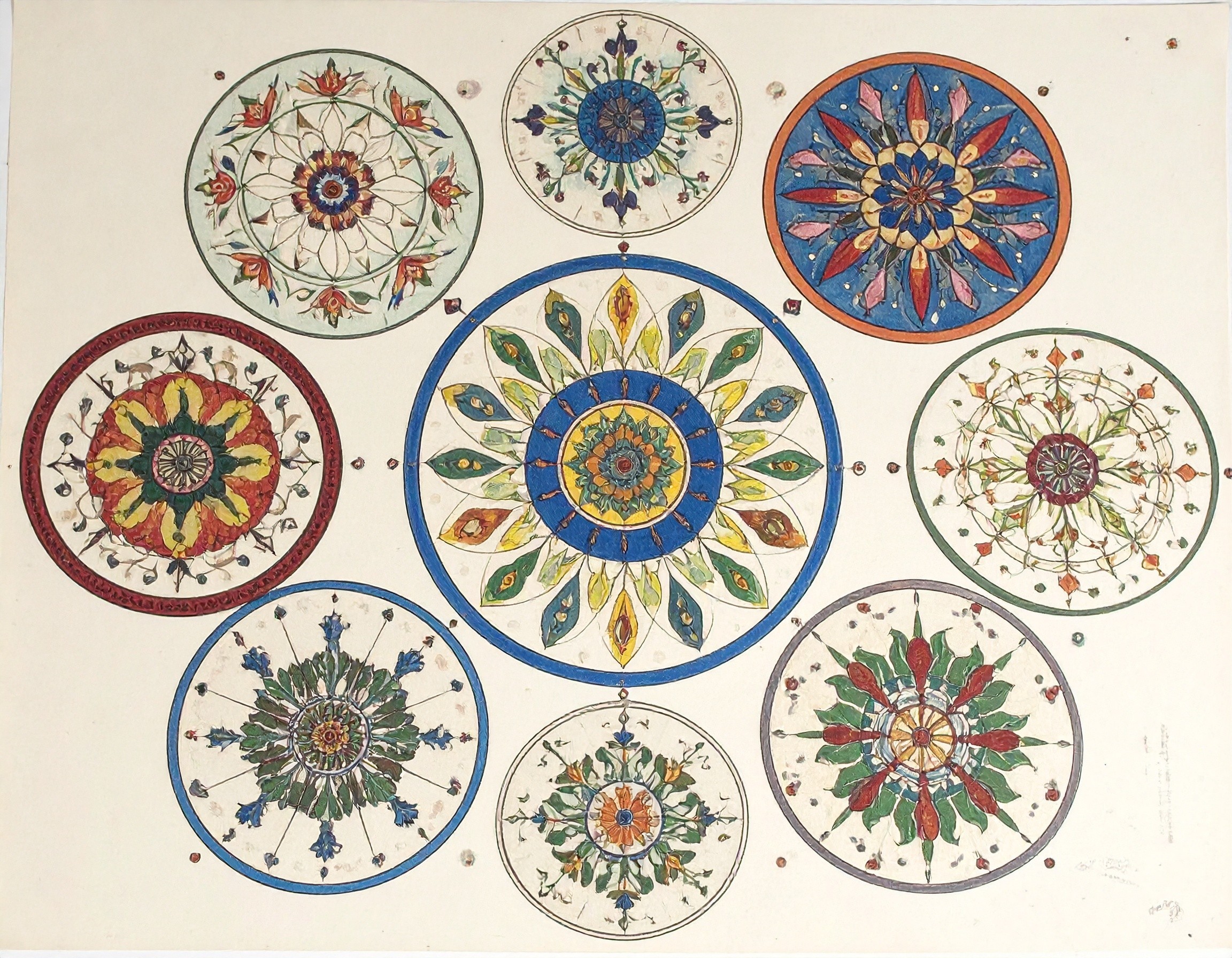
Looked at in this way, kolams are mnemonic devices, not much different from oral epics, or musical ragas, where structure and improvisation coexist in harmony. For some families, kolam styles are almost like heirlooms, passed down to the next generation as a part of their cultural heritage, to be embedded in marriage rituals, festivals, or caste-specific customs.
Kolams of Resistance and Reclamation
Beyond being mathematical wonders, kolams are also layered with social meaning and richness. Kolas, as a women-led practice, can be seen as enduring forms of intellectual labour of the women, which traditionally has a long history of being ignored by patriarchal and colonial systems of knowledge.
Women were rarely given a place to shine in formal sciences, but in the yards of their homes, they quietly practiced algorithms, encoded memory, and mapped symmetrical logic every single day. Kolams were perhaps their own unconscious efforts to exert their importance in a field which had long been reserved exclusively for males.
In recent years, feminist scholars have reinterpreted kolams as silent struggles against the continued effort to erase and undermine women’s intellectual contributions, as a claim to space and knowledge, and as language for the marginalized, especially in rural and Dalit homes, where kolams have their own unique and unconventional forms.
Drawing the Line from Past to Future
In the face of the ever-looming threat of globalization, where hand-drawn kolams are increasingly being replaced by vinyl stickers or printed mats, many young artists are now looking to revive kolam traditions through digital art, workshops, and coding platforms. These efforts have taken the forms of kolam-generating apps, workshops integrating kolams with coding to raise interest among the younger generations, interactive art installations, like those by artist Ranjani Shettar, and even the use of kolams in artificial intelligence to train models in pattern recognition and design. Kolams are cultural algorithms and maps of memory, math, and meaning.

They represent an ancient knowledge system, formalized not in books, but breathing through repetition, touch, and the rhythm of everyday life. By honouring kolams we acknowledge the intellectual labour of countless unnamed women who practiced complex ideas in simple spaces—without calling it science, yet embodying it with elegance. In a world panting after complex coding and algorithms, perhaps we should first pause and look at the ground beneath our feet. It is there, in rice flour drawings glistening in the morning light, that we find a wisdom we are only beginning to fathom.
